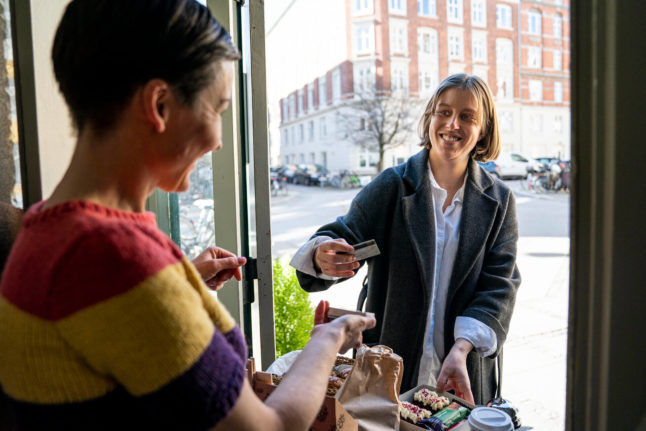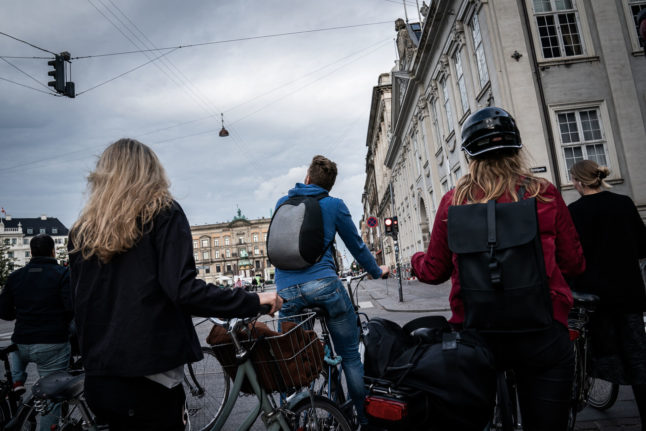“En kop kaffe”, translated as “a cup of coffee”, is how many people order their drink at a cafe in Denmark. To those who have grown up in countries where “please” is ingrained in their vocabulary, this Danish phrase can feel incomplete. But an urge to slip some sort of nicety in there may cause confusion all around.
This is not only a reflection of the directness of the Danish language, especially compared to English, but of the many different ways to be polite.
“I guess the rules for politeness are different depending on what you’re used to. If you’re overly polite, it is just as strange as when people have other ways of expressing politeness,” Peter Bakker, a senior lecturer in linguistics at Aarhus University, told The Local.
That’s not to say you can’t turn your coffee order into something more formal and polite, it’s just not expected in this instance.
Some people will use tak (“thank you”) as a substitute for please: en kop kaffe, tak. You can also say kan jeg få en kop kaffe (“can I get a cup of coffee”), jeg vil gerne bede om en kop kaffe (“I’d like to ask for a cup of coffee”) or jeg vil gerne have en kop kaffe (“I’d like a cup of coffee”).
READ ALSO: 11 very useful Danish words that are very difficult to translate
From a British perspective, Danes are direct. From a Dutch perspective, such as Bakker’s, they are not. “It is the users who make the language,” the linguistics expert said.
Venligst is probably the closest word to “please” that exists in the Danish language. It is primarily used in the written form, like in luk venligst døren, (“please close the door”). Directly translated it means “be so kind as to close the door”, similarly to how it is used in a slightly different grammatical construct in vil du være så venlig at række mig chokoladen? (“would you be so kind as to pass me the chocolate?”).
“In some languages, a phrase like ‘give me the chocolate’, has only one way to express that, whether it’s to a child, a seller, a Queen. In Danish, there are a variety of ways to say it,” Bakker explained.
READ ALSO: Six mistakes everyone makes when they first move to Denmark
Some examples of this include:
Vil du give mig chokoladen? – “Would you give me the chocolate?”
Har du mulighed for at give mig chokoladen? – “Are you able to give me the chocolate?”
Jeg kunne godt tænke mig chokoladen – “I wouldn’t mind having the chocolate.”
Vil du være så venlig/sød at give mig chokoladen? – “Would you be so kind as to give me the chocolate?
“It is a universal rule of politeness, that the more polite the expression, the longer it is. So the symbolic distance expressed in the length of the phrase, is the length of the social distance between you and person you’re talking to. The better you know that person, the fewer words you use,” Bakker said.
This is why it can take time to get used to the subtleties of politeness in different countries because it doesn’t take long to drop those lengthy phrases in Denmark, he explained. But there are other ways of showing politeness.
“The Danes are champions at saying thank you, they say thank you for everything,” Bakker said.
“On Friday we had guests at our house. If I now meet one of those guests, they are expected to say to me tak for sidst, which is “thanks for the last time” we saw each other. Even half a year later, you remind each other of the nice evening you had together,” he said.
Other examples of using tak include tak for mad, to say thanks for a meal; tak for i dag/i aften, saying thanks for a day or evening spent together; tusind tak, to show a lot of gratitude; mange tak, for many thanks, selv tak to say you’re welcome, tak for invitationen and tak fordi du kom, to say thank you for coming to your guests.
There’s also the use of the phrase værsgo, when you give something to somebody. This is a short form of the phrase vær så god which literally means “be so good” but can be translated to “there you go, you’re welcome”.
“And that’s of course an expression of politeness,” Bakker pointed out.
It is only in the requesting of something that a word like “please” does not exist in Danish. But as Bakker explained, its absence and the perceived directness of Danes should not be mistaken for rudeness.



 Please whitelist us to continue reading.
Please whitelist us to continue reading.
Member comments